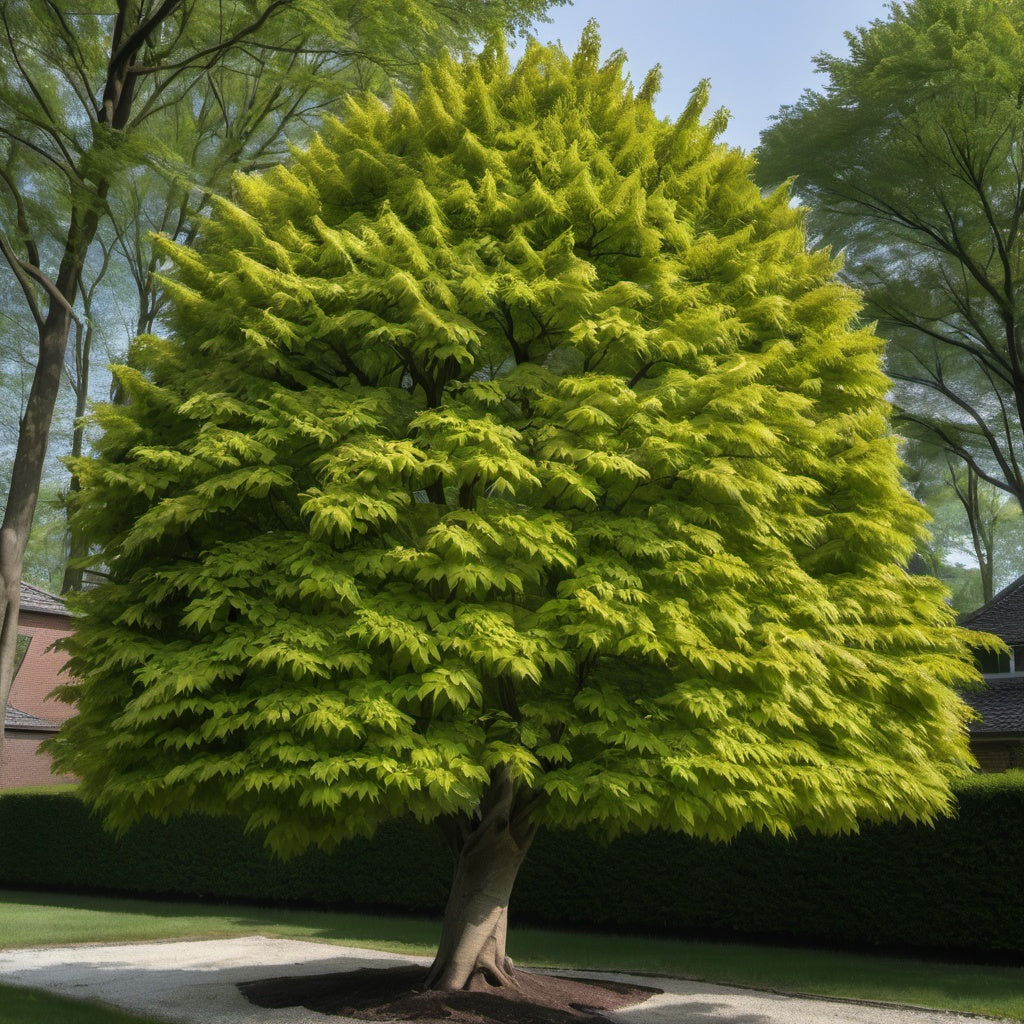Asian Hornbeam Tree Seeds
Asian Hornbeam Tree Seeds
Couldn't load pickup availability
Asian Hornbeam Tree Seeds
(Carpinus cordata)
Carpinus cordata, commonly known as the Japanese hornbeam or Asian hornbeam, is a deciduous tree belonging to the Betulaceae family.
Description
- Height: Typically grows between 15 to 20 meters (about 50 to 65 feet) tall.
- Leaves: The leaves are simple, ovate, and serrated, measuring about 5 to 10 cm (2 to 4 inches) in length. They are dark green in color, turning yellow to orange in the fall.
- Bark: The bark is smooth and grayish, often developing a fluted appearance as the tree matures.
- Flowers: The Asian Hornbeam tree produces inconspicuous flowers in the spring, which are catkins. Male and female flowers appear on the same tree but in different clusters.
Habitat
- Native Range: This species is native to East Asia, particularly in Japan, Korea, and parts of China.
- Habitat Preferences: It thrives in well-drained soils and prefers a sunny to partially shaded environment. It can often be found in mixed forests and along riverbanks.
Uses
- Ornamental: Due to its attractive foliage and shape, Asian Hornbeam is often used as an ornamental tree in parks and gardens.
- Wood: The wood is strong and durable, making it suitable for furniture, flooring, and other woodworking projects.
Care
- Growth Conditions: It prefers fertile, moist, and well-drained soils but can tolerate a variety of soil types. It is moderately drought-resistant once established.
- Pruning: Pruning is generally done to maintain its shape and health, particularly in younger trees.
Ecological Importance
- Wildlife: The tree provides habitat and food for various wildlife species, including birds and insects.
The Asian Hornbeam tree is valued not only for its aesthetic appeal but also for its resilience and adaptability in different environments.
Zones: 6 to 7
Germination Range: 50 to 70%
Stratification Requirement: Seed require 30-60 days warm stratification followed by 60-120 days cold stratification.
Planting Instructions:
Seed Preparation: Before planting, it’s essential to prepare the seeds properly. Asian Hornbeam tree seeds benefit from a process called warm and cold stratification, which mimics natural winter conditions and helps break seed dormancy. To stratify the seeds, soak them in water for 24 hours, then place them in a damp medium such as seed starting mix. Place the mixture of seeds and seed starting mix in a plastic container on a heat seedling mat for 24 hours a day. Keep on the heat mat for 30-60 days. After the warm stratification period is over, place the mixture of seeds and soil in a sealed ziplock bag. Store the bag in your refrigerator for 60 to 120 days. This chilling period enhances the likelihood of germination when the seeds are finally planted.
Soil and Location: When selecting a planting site, choose well-draining soil that is rich in organic matter. Carpinus cordata prefers slightly acidic to neutral pH levels and can thrive in various soil types, including loamy and sandy soils. It’s also important to pick a location that receives partial to full sunlight, as the tree will flourish best with adequate light.
Planting Process: After the stratification period, it’s time to plant the seeds. In early spring, when the risk of frost has passed, prepare a planting bed by loosening the soil and removing any weeds or debris. Plant the seeds about 1 inch deep, spacing them 4 to 6 inches apart to allow room for growth. Water the area gently after planting, ensuring the soil remains consistently moist but not waterlogged.
Care and Maintenance: Following planting, monitor the seeds closely for germination, which may take several weeks. Once seedlings emerge, thin them out to avoid overcrowding, leaving the healthiest plants to grow. Regular watering and mulching can help retain moisture and suppress weeds. Fertilization may not be necessary during the first year, but a balanced fertilizer can be applied in subsequent years to promote healthy growth. With patience and care, your Asian Hornbeam tree seedlings will develop into sturdy young trees.
Share


